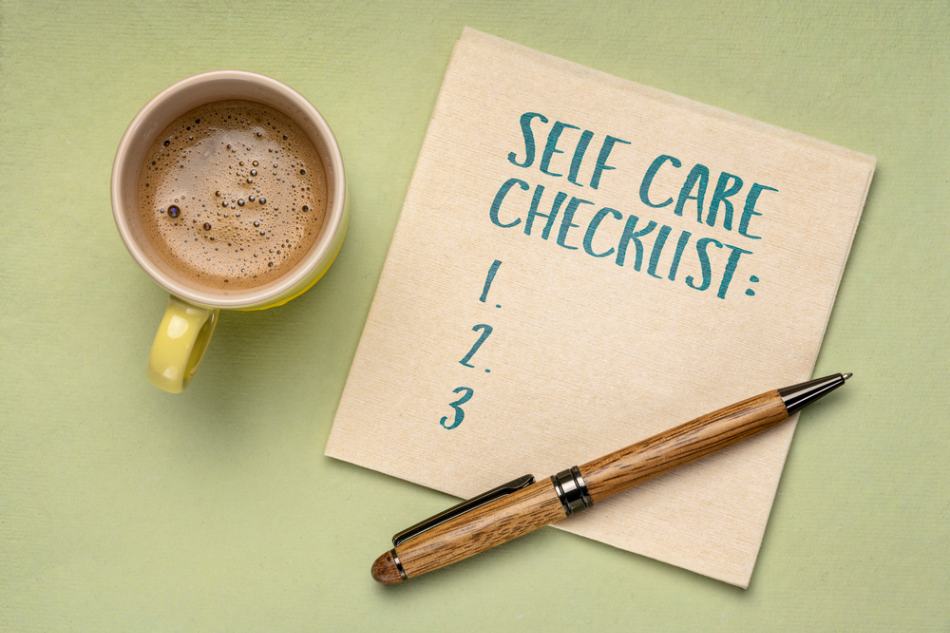March 26, 2018
7. Couples Exercise: Dialogue on Feelings
Written by Rachel Eddins
Posted in Self Help / Personal Development, Tools & Exercises and with tags: Couples & Marriage, couples journal exercises
 Couples Communication Exercise: Dialogue on Feelings
Couples Communication Exercise: Dialogue on Feelings
The only purpose in dialoguing on feelings is for your partner to understand your feelings and for you to understand your partner’s feelings. This is not a time to do anything about how you feel. It is not a time to try and explain, analyze or justify your feelings.
Listen, Don’t Attempt to Change or Fix
As the listener to your partner’s feelings it is not a time to try to change, fix or advise your partner on how he or she feels nor is it a time to try and change yours or your partner’s behavior.
Dialoguing on feelings is learning to accept your own and your partners feelings as they are.
What is a Feeling?
Feelings and emotions are synonymous though we often think of the feeling as the way we experience an emotion.
The definition of a feeling is an inner reaction to a particular person, place or situation.
This inner reaction has a number of properties to it.
- There are inner images (pictures that we form in our minds),
- inner conversations or thoughts (things that we tell ourselves)
- inner body sensations (physical sensations in various parts of our bodies)
- surface manifestations that include posture (how we hold ourselves) and movements
- pleasant or unpleasant, neither right nor wrong, good or bad
- they can range in intensity from mild to strong
- feelings can also have a certain color to them illustrated by how we sometimes spontaneously describe them. We can sometimes feel “blue” when we are down, we can be “green” with envy or jealousy, we can be so angry that we see “red”, when we are on top of things we can feel “sunny” and “bright”, or guilt may take on a certain “darkness” or “blackness”.
In fact, feelings don’t mean anything. They are simply what they are. A feeling is a feeling is a feeling.
Allowing feelings to be the way they are is to describe feelings.
When you describe something you are in the moment and seeing and hearing something as it is. You are not doing anything with it, or trying to change it into something it is not. You are trying to see it from as many different vantage points as possible so that you can make as full a description as possible. To describe something requires you to take the role of an observer.
The language of our inner world is not as clear as the language we have for objects and external events. Very few of us have ever been trained or encouraged in the language of feelings. As children, we knew feelings well and we expressed our feelings spontaneously and creatively. As we grew older and became “socialized” the focus on feelings became less and less important and for many of us feelings were often denigrated even as it is today in our culture.
We now live in a world of opinions; this is what “should” be and that is what “should not” be, this is “right”, that’s “wrong”, I’m right and you’re wrong, you’re to blame, it’s your fault, this is what I “think”; or we have one belief system pitted against another.
While we often hear statements like, “You can’t let your feelings control your actions”, consider this—your feelings already do control your actions. The degree to which you do not acknowledge your feelings, is the degree to which your feelings run your life.
Reacting vs Responding to Our Feelings
When we experience an emotion we can either “be” or “act out” the emotion or we can acknowledge the emotion. It is one thing to be angry and upset and call you names and put you down; and it is another thing to acknowledge that I am upset and angry.
When I acknowledge the feeling, I am at the same time owning and being responsible for it. You can hear me and seek to understand me. If I am acting out the emotion, I am attacking you and making you responsible for it. Communication stops and a wall will inevitably develop between us.
While you may have come to couples therapy to focus on particular “issues” in your life or relationship, it will be important and necessary to create a foundation in which to deal with those issues.
Taking the Time to Share Your Feelings is the Basis for a Loving Relationship
Trying to change things without ever understanding how one another feels is impossible. The best you can do is to change your behavior or continue in the never ending circle of trying to change your partner’s behavior through control, nagging, criticizing and the like. The “change” that arises from such attempts is short-lived at best.
Describing feelings with your partner allows your partner to know a little piece of your inner world and for you to know a piece of your partner’s world. It is a sacred time in that it is a time when you are learning to be present to yourself and your partner. It is what true communication is all about and is the basis for developing a loving relationship. Love has no agenda. Love does not try to change. Love accepts something as it is.
When you are loving and feeling loved (not just in the romantic sense), your relationship will reach new heights and dimensions that you cannot even imagine.

Couples Exercise: Writing & Sharing Dialogue on Feelings
Step 1: Choose a situation you are experiencing at the moment that evokes feelings within you.
Then form a question around it that asks for feelings.
Example: “How do I feel about moving to a new home” or “How do I feel about my relationship with…” or “How do I feel when you…” or “How do I feel when I…”
There are hundreds of dialogue questions on Dr. Curtis’ website you can select if you’re not sure where to start. Take turns choosing the focus question. Choose positive questions as well as challenging ones.
Do the dialogues daily. It is a gift of love to one another.
Step 2: Write out your feelings about the question on a dialogue letter.
- Time the writing
- Have a good attitude when you start writing. You are exploring your feelings not to attack or blame, but rather to reach understanding, support and connection.
- Write a question at the top of the page, frame it as, “How do I feel about…?” or “How do I feel when…?”
- Address your partner with a greeting or salutation, (“Dear ______”)
- Mention something that you like about your partner (“I like that you…”) or something that you feel gratitude for (“Thank you for…”) or something that you appreciate about your partner (“I appreciate you for…”).
- In the body of the letter, address the question, focus on feelings and describe your feelings fully, (“I feel like…”). There are no right or wrong answers. Focus on naming feelings and describing them. Feelings are not blame!
- Use the P.I.I.B.M. method (Physical sensations, Image, Inner conversation, Behavior, Memory or past experience). Use the “Focus on Feelings Dialogue” form below for the first several weeks to help structure your response.
- Closing (“Love, _______”)
Download the focus on feelings dialogue exercise here.
Couples feelings dialogue worksheet.
The feelings lists can help you find the words for what you are experiencing. Or you can work backwards and identify the thoughts you are having, which correspond to feelings.
Common Errors Made During Writing Letters
- Blaming your spouse for your feelings
- Bringing up the past
- Saying “I feel that…” or “I feel that you…”
- Not using a feeling
- Not describing your feeling
- Justifying/Explaining reasons for your feeling
- Using the words “why” and “because”
Step 3: Share your written feelings with your partner in a verbal dialogue.
- Select a time when you can both be present.
- Exchange letters.
- Read each others letter silently. Avoid negative non-verbals. Avoid making comments.
- Then take turns reading each other’s letter out loud. Decide who wants to go first, and then follow the steps below before the other reads out loud.
Step 4: Respond to your partner after reading their letter.
- Be aware of your thoughts, judgments, and feelings about what your spouse is saying, but do not allow yourself to be controlled by them. Make a deliberate decision to be a caring listener.
- Begin with the strongest feeling in each letter. Try to identify/understand the emotions your spouse is feeling as he/she talks. How intense are these emotions?
- Make a statement that conveys you heard and are trying to understand your spouse’s feelings without adding any of your own response.
- Mirror that feeling back with a past experience where you might have felt the same.
- Your spouse’s feelings must be identified in your response (or by mirroring back what you have heard), but the description of the situation or event may not be important to identify.
- Ask your spouse any clarifying questions:
- “Is there anything else that could help me to understand your feelings more fully?”
- “Can you tell me more about this?”
- “When you said this what did you mean?”
- “Could you give me another example of a past experience?”
- “Is it kind of like when we experienced _______ together?”).
- No why questions. You are simply requesting a fuller description of the feelings.
- Continue inquiring into your partner’s feelings until you experience the full depth and breadth of the feeling (about 5 or 6 minutes). Avoid tendency to “fix” or have your partner “explain” his or her feelings. Your goal is to understand the phenomenon of your partner’s feelings with true empathy, to walk for a moment in your partner’s shoes. When you feel that you have understood your partner’s feelings, let him/her know. “I think I understand how you feel.”
Common Errors Made in the Shared Dialogue
- Wrong time/atmosphere to begin and not entering dialogue with openness
- Not picking a question ahead of time
- Arguing about the question
- Not setting writing/dialogue time
- One is not prepared at dialogue time
- One is not writing the entire writing time
- Commenting during the exchange of notebooks
- Not reading letter twice (once from the heart and once out loud)
- Correcting errors in your spouses letter
- Non-verbals while reading your spouses letter
- Arguing about who starts verbal dialogue first
- Letting interruptions occur during writing/dialogue time
- Jumping back and forth on each others feelings during dialogue
- Saying, “You shouldn’t feel that way” or “I didn’t mean to do or say that”
- Judging your spouses feelings
- Using your own response feeling to get off track
- Not picking a question for the next dialogue time
- Getting upset and stopping the dialogue by walking out
Step 5: Acknowledge your partner’s response to your feelings, then switch.
- As the responder, seek to stay with description vs. explanations, apologizing for having the feeling, justifying the feeling, trying to figure out why you have the feeling etc.
- When you feel that your partner has understood your feelings let him or her know that. “You seem to understand my feelings”.
- Then switch with the other reading and responding following the steps above.
- Spend about 5 or 6 minutes on each letter. After 10 to 12 minutes, close the exercise and move on to something else. DO NOT DRAG IT ON!
- Take turns deciding on a question for your next dialogue.
- Schedule a time and a place.
- You can close with a kiss or a hug or a thank you.
Tips: If we can substitute “I am” for “I feel” then we are expressing a feeling. If we can substitute “I think” for “I feel” we are expressing a thought or a judgment.
Example: I feel satisfied…I am satisfied = a feeling. I feel you are upset…I think you are upset = a judgment or an interpretation

Effective Listening & Responding:
When you practice the dialogue activities here and throughout the couples journal exercises, both listening and responding are crucial to foster safety and connection.
1. Worst Response:
Your partner says something and you:
- reject their feelings
- criticize
- question their perceptions
- defend yourself
- ignore them
- share just to meet your own needs
This is hurtful and indicates rejection.
2. Poor Response:
Your partner says something and you:
- ask questions about the facts
- give advice
- ignore their feelings
- reassure without identifying their feelings
This misses feelings and is dismissive. Your partner is likely to feel frustrated.
3. Good Response:
Your partner says something and you:
- accurately identify their primary feeling
This acknowledges your partner’s feelings and communicates acceptance.
4. Best Response:
Your partner says something and you:
- ask questions about the feelings (clarify feelings)
- mirror back with empathy (sounds like you feel…)
- communicate understanding of their feelings (and that makes sense to me because…)
- try to understand non-verbals
This goes beyond the obvious feelings to communicate understanding and validation. Your partner is likely to feel cared for and want to tell you more.
This fosters connection and communication!
Read More: Effective Communication & Active Listening Skills
|
|
Examples of the Dialogue Technique
“Poor” Dialogue Technique
Question:
How do I feel when you don’t listen to me?
Chris:
I really don’t want to do this question, but I guess I have to.
I don’t know what I can say here so you won’t get mad at me, because you never listen when I am talking to you. You are always busy watching television or you are talking on the phone. My parents always listened to each other because they really cared about each other.
Now I have to say how I feel telling you this. I guess I feel okay because you should know these things, and we’re supposed to be able to say whatever we want in dialogue.
You’ll probably get mad at me, but there it is!. I hope you can accept this.
Pat
“Good” Dialogue Technique
Question:
How do I feel when we are open in our communication?
Dearest Chris,
Thank you for your help around the house lately. I really appreciate all that you do.
I feel close, loved and hopeful when we are open in our communication.
My strongest feeling right now is hopeful, my heart is racing a little faster than usual, and a smile is on my face (Physical sensations).
The intensity of my hopeful feeling is an 8 (Intensity).
My hopeful feeling is like seeing the beautiful colors of a rainbow after a storm is over (Color).
Hopeful, like a child waiting to open her birthday presents, wondering if she got the special gift she asked for (Image).
When I feel hopeful I tell myself such things as, “I love my husband. He’s my one and only” (Inner conversation).
The behavior that I tend to act out when I feel hopeful is making you your favorite dinner (Behavior) and the words that want to come out of my mouth are, “I love you” (Words).
I feel hopeful, like I remember feeling when we marched in parades and then afterwards waiting to hear if we had won first prize (Memory).
Another time I felt this same feeling was after the six week stay our nephew Ricky had with us. Remember how we disciplined, taught, and treated Ricky just like our own children. After a few weeks, we started to see signs that he was beginning to listen to us and was interacting better with our kids and even talking better. He would smile and play, which wasn’t like him. My hopeful feeling is how I felt thinking we had given him a few weeks of a different life (Past shared experience).
All My Love,
Pat
Go to the next journaling exercise: Actions that Can Make a Difference
*Journaling exercises written by Cort Curtis, Ph.D, used with permission.
Why You Feel This Way
Get instant access to your free ebook.
Grounding & Self Soothing
Get instant access to your free ebook.
7 Mood-Boosting Tips
Get instant access to your free ebook.



















